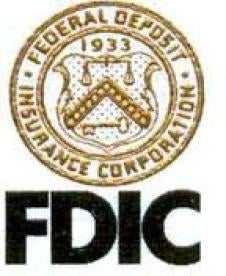There are numerous similarities between the current financial crisis and the savings and loan crisis of the late 1980s and early 1990s (S&L Crisis), but more importantly, there are significant distinctions. The S&L Crisis precipitated the failure of 2,9121financial institutions and the filing of 9202professional liability (PL) claims against bank officers, directors and third-party contractors, such as attorneys, accountants, appraisers, brokers and insurance companies recovering more than $5 billion.3Predominantly, PL claims are initiated by the FDIC,4but the US Department of Justice, state bank regulators, bankruptcy trustees, shareholders and others may also file PL claims. Like the S&L Crisis, the current financial crisis has, so far, witnessed the failure of 4265financial institutions between January 2007 and February 14, 2012, and the FDIC has authorized 4276director and officer PL claims, seeking more than $7.82 billion in damages. While the S&L Crisis was caused by tax reform, deregulation (giving thrifts many of the same powers as banks, but without the same regulatory oversight), brokered deposits, imprudent real estate lending and, in some cases, overly aggressive bank and thrift officials exploiting regulatory loopholes and committing outright fraud, the current financial crisis was caused in large part by a historic but unsustainable appreciation in home prices.7The housing bubble, though anticipated by some, was such that most people, including bankers and regulators, at the time were unaware of its existence. This pervasive lack of premonition or precognition may be the difference that reduces or eliminates the ultimate culpability of failed-bank directors and officers today and which may ultimately lead to victory in the courtroom or at the negotiating table in the future.
Although the current real estate crisis was largely not predictable nor predicted,8the FDIC’s response in the wake of the financial crisis’ fallout was. This Article discusses what many bank directors and officers are finding out the hard way—how the FDIC’s PL claims machine works and how our new team, the Directors' and Officers' Defense (DOD) group, will vigorously defend against it.
As part of a federally insured bank’s failure, the bank’s primary regulator will “close” the bank and appoint the FDIC as receiver to resolve claims against the institution’s estate and to mitigate losses to the deposit insurance fund. In this capacity, the FDIC “steps into the shoes”9of the failed bank at the moment of closure. At this point, the FDIC’s Professional Liability Section (PLS) energetically conducts an investigation into the failure and its causes. In some cases, the investigation actually begins well before the failure, and generally lasts 18 months or less after the time of failure, to determine whom may be personally liable for the institution’s losses. With respect to the current financial crisis, the FDIC, on average, has taken 2.2 years to file a PL action related to a failed institution.10According to the FDIC, the PLS will file suit against directors, officers and third parties if the claim is both: (1) meritorious; and (2) cost effective.11The FDIC states that the PLS will pursue an action only if the claim is: sound on its merits, more than likely to succeed in litigation and likely to return a monetary recovery.12Typically, the PLS focuses on cases where a director or officer is alleged to have: engaged in dishonest conduct; condoned abusive transactions with insiders; failed to adhere to applicable laws, regulations or policies; or failed to establish proper underwriting standards.13Historically, this results in the PLS filing suit against directors and officers in approximately 25 percent of bank failures.14However, with respect to the current financial crisis, this number is closer to 5 percent.15Before the PLS initiates an action, it usually first issues a demand letter. Although the demand letter is not a formal lawsuit, it is often considered a “claim” under many director and officer (D&O) insurance policies, thereby initiating coverage of the directors and officers from that point forward. For reasons tied to the terms of the D&O policy, the demand letter is typically issued shortly after the bank’s failure. While D&O policies are attractive targets for an agency seeking monetary damages, the FDIC also has the authority to demand restitution, indemnification, asset freezes, civil money penalties, removal and prohibition orders, and cease-and-desist/consent orders.16
Should the PLS choose to file a formal lawsuit, it has the latitude to file a number of different claims against directors and officers. While the PLS may file actions for fraud, breach of contract, aiding and abetting, and breach of ethical obligations, it most commonly files actions alleging a director or officer was negligent by failing to adequately supervise the bank and/or by breaching his or her common-law fiduciary duties of care and loyalty. Fraud actions are typically not covered by the bank’s D&O policy; as a result, the FDIC has brought so-called “open bank” actions against bank executives, seeking to obtain civil monetary penalties, etc. for such conduct. Generally, the duty of care requires directors and officers to “act as prudent and diligent business persons in conducting the affairs of the bank,” while the duty of loyalty requires directors and officers to “administer the affairs of the bank with candor, personal honesty and integrity,” and therefore, they are prohibited from advancing their own affairs, or those of others, at the expense of the bank.17Under the Financial Institutions Reform Recovery and Enforcement Act of 1989, the FDIC must establish, at a minimum, that the directors and officers engaged in gross negligence to be found guilty of the most common PL claims unless state law imposes a stricter standard, such as simple negligence.18Fortunately, the majority of US jurisdictions impose the higher standard of gross negligence. Exactly what constitutes “gross negligence” is dependent upon state law. A court in Illinois stated gross negligence is “very great negligence,” but something less than willful, wanton and reckless conduct.19Consequently, directors and officers are generally protected from liability “if they have acted in good faith and due care, and if they have made fully informed business decisions within the scope of their authority and without personal interest or self-dealing.”20
In light of what is at stake for directors and officers in the event of a bank failure, well-advised and represented bank officials will have taken certain precautionary measures to prepare for the possibility of subsequent adverse litigation. Advance preparation for the bank’s failure ideally begins months before the unwelcome event, not after the inevitable closure. These measures include: taking steps to thoroughly understand the bank’s D&O insurance policy and determining whether certain key exclusions to coverage exist, such as the so-called “regulatory” and “insured v. insured” exclusions; seeking “tail coverage” for claims brought against directors and officers after the D&O policy’s expiration; considering obtaining copies of bank records that may assist the director or officer in subsequent adverse litigation, such as board minutes, loan committee minutes, correspondences with regulators, bylaws and charters; and retaining new, independent legal counsel to represent the board or any of its directors and officers individually.21
Conversely, directors and officers should not, without first consulting with independent legal counsel, fight or otherwise be uncooperative with the FDIC, feed the regulators false promises or resign from their positions. While these measures are not exhaustive, they can put directors and officers in a more advantageous position if, or when, adverse litigation threatens.
On the key topic of departure, our advice has normally been the exact opposite of suggesting resignation. To the contrary, we tell bank insiders to “take charge!” Directors who have been reluctant to “get their hands dirty” with the institution’s problems and its regulatory difficulties are typically advised to take an active role in responding to the crisis. We urge them to form compliance committees, attend all meetings with the regulators and, as appropriate, have separate lines of communication directly with the regulators.
Directors and officers who find themselves opposite the FDIC in a PL action despite their diligence, are not without defenses. The most common of these defenses, and those likely to be the most successful, are the business judgment rule, contractual exoneration, the expiration of the statute of limitations and the absence of loss causation. The business judgment rule provides insulation from liability to directors and officers charged with negligence or a breach of a fiduciary duty of care if they acted prudently and in good faith under the circumstances, even if their actions turned out to be “wrong” in retrospect. In doing so, directors and officers are entitled to rely on bank management, advisers chosen with care, and others to properly perform their duties. In Illinois and in other states, the bank’s charter or bylaws may expressly provide exculpation and exoneration to directors who breach their fiduciary duty of care.22The purpose of the Illinois law is to give directors a basic line of defense to shareholders (now the FDIC after the failure) who second guess business decisions.
Should the FDIC file a lawsuit alleging breach of a fiduciary duty, negligence action or any other tort claim, it must do so within three years beginning on the date the claim accrues, or six years for contract claims, unless state law provides for a longer period.23However, claims arising from fraud, intentional misconduct resulting in unjust enrichment or substantial loss to the institution may be filed with the FDIC without respect to the statute of limitations as long as the action did not expire more than five years before the FDIC was appointed receiver or conservator of the bank.
In addition to the foregoing, the FDIC must prove the losses incurred by the failed bank were caused by the defendant’s specific acts or omissions, and not unrelated influences, in order to be successful. This nexus between a director’s or officer’s actions/lapses and the monetary losses incurred by a failed bank is potentially the largest differentiating factor between the current financial crisis and the S&L Crisis of twenty years ago. While the S&L Crisis was largely the product of deregulation, imprudent real estate lending and entangled conflicts of interest, the current crisis is largely the product of the currently depressed real estate market, one in which most of Wall Street and the regulators themselves failed to predict. Thus, the FDIC and other regulators have unfairly benefited from 20/20 hindsight in their PL allegations. Many critics of the agencies, including those in Congress, have made this point. Essentially, directors and officers are victims not of what they did, but of what they did not predict—a ubiquitous and precipitous collapse in real estate values. Fortunately, this unequivocally shameless attack is mitigated by the rise of a few potential defenses placing blame squarely upon the regulators themselves. In light of the 1994 landmark Supreme Court decision of O’Melveny & Myers v. FDIC,24the FDIC is now likely subject to defenses raised by directors and officers claiming the FDIC itself is partially to blame for a failed bank’s losses. Specifically, defendants may now claim that the FDIC was contributively or comparatively negligent and is estopped or has waived its claims by condoning the bank’s lending activities prior to the bank’s failure. While it is uncertain how these defenses will play out in court, they will, no doubt, be raised in the current wave of PL litigation. In fact, a few such cases have already begun to tread this path.
It should be noted that one theme the FDIC has stressed in a few of the earliest cases it filed may be found to have some merit. The complaints allege that insiders were fully motivated—sometimes directly so—to ignore early signs of credit problems and to continue lending imprudently. Several cases dwell on how monetary incentives to both borrowers and directors may have caused decision makers to disregard the bank’s best interests in favor of their own pocketbooks.
In the 2009 failure of Silverton Bank of Atlanta, Georgia (Silverton), the FDIC’s PLS charged seventeen of the bank’s former directors (all presidents or CEOs of other community banks) and officers with negligence, gross negligence, waste, and breaches of fiduciary duties.25Seeking $71 million in damages, the FDIC claims the bank’s directors and officers failed to properly manage and supervise its commercial real estate (CRE) and acquisition, development and construction (ADC) lending and participation programs by recklessly pursuing expansion in a declining economy. The FDIC claims that Silverton, beginning in the mid 2000s, implemented an overly aggressive expansion policy seeking to become the nation’s largest banker’s bank by entering into new markets and by approving increasingly speculative loans that were unscrupulously underwritten. The FDIC complains that this overemphasis on expansion encouraged bank officials to book loans based on quantity, not quality, leaving the bank dangerously overexposed and dependent on the volatile CRE and ADC markets. The FDIC alleges that, when it should have become abundantly clear that the CRE and ADC markets were failing, rather than reducing its CRE and ADC lending, Silverton believed that “if [it] grew fast enough to generate enough money, [it could] take care of [its] problems.” Moreover, the bank allegedly paid exorbitant sums of money for extravagant director, officer and key-client meetings, purchased unnecessary aircraft and imprudently constructed a new corporate headquarters despite the bank’s declining capital.
In its 102-page complaint implicating Silverton’s directors and officers, the FDIC listed fifteen particularly unprofitable loans. One such loan in which the bank purchased a participation interest for $7 million in a 73.02 acre parcel to be developed into 147 residential lots located in Middleton, Idaho, violated the bank's loan approval policy in a number of ways, such as failing to obtain any financial records from the loan’s guarantors. In addition, the FDIC asserted that the “deterioration of the market was completely ignored despite obvious signs that the real estate market was on the decline,” yet the loan committee approved it anyway, resulting in an alleged $5.8 million loss. The FDIC goes on to describe fourteen other loans violating Silverton’s credit and underwriting standards which were being made in areas where the real estate market was declining. The FDIC charged Silverton’s directors and officers with multiple counts of negligence and breaches of their fiduciary duties for approving loans such as the one in Idaho. At the time this report was authored, only the pro se defendant has filed an answer to the FDIC’s claims. If and when the other defendants file their answers, they likely will include the affirmative defenses of contributory and comparative negligence because, in its regulatory exams, the FDIC also failed to contemporaneously predict the collapse of the local CRE and ADC markets.
Similarly, in the 308-page, 68-count FDIC complaint against four former IndyMac Bank officers for negligence and breaches of their fiduciary duties, the FDIC alleges that: the defendants “repeatedly disregarded [their] credit policies and approved loans to borrowers who were not creditworthy and/or for projects that provided insufficient collateral;” that IndyMac’s compensation incentives encouraged growth over quality; and that the defendants failed to curtail lending at “the tail-end of the longest appreciating real estate market in over four decades”26amounting to $500 million in losses. As in the allegations in the Silverton complaint, the FDIC is very critical of officers who operated their lending programs as "business-as-usual" when, as the FDIC claims, it should have been obvious that business was not "as usual" and real estate prices were beginning to decline. In doing so, the FDIC has targeted the bank’s worst-performing loans. But unlike Silverton, the IndyMac litigation is further along and three of the officers already have filed their answers and affirmative defenses to the FDIC’s charges. In denying their culpability, the three officers claimed the affirmative defenses of the business judgment rule, statute of limitations, lack of loss causation, and even contributory and comparative negligence.27Whether the IndyMac officers will prevail on their claims remains to be seen, but it at least appears that the O’Melveny decision has expanded the opportunities directors and officers have to defend themselves against claims faulting them for lack of foresight.
Finally, an action against the directors and officers of Corn Belt Bank and Trust Company of Pittsfield, Illinois alleged that three of the bank’s officers and directors were grossly negligent in underwriting five commercial loans resulting in losses of $10.4 million.28As with the Silverton and IndyMac claims, the FDIC focused its claims on the actions or inactions by the bank’s loan committees with respect to specific loans. For example, the FDIC was critical of the bank’s directors and officers for approving an out-of-state loan to a start-up company at 100 percent loan-to-value secured by guarantees valued at only 12 percent of the loan amount. The FDIC claims the $3.3 million loss from this loan could have been avoided if the defendants had informed themselves of the attendant risks in the first place. Rather than asserting any affirmative defenses and litigating the FDIC’s claims, the defendants settled with the agency for an undisclosed amount.
By focusing on specific loans where losses allegedly occurred, the FDIC may be on shaky ground. How can bank executives know which loans will sour? Other loans made under similar circumstances by the same executives presumably did not produce a loss and were quite profitable. Are bank officers unlike other business executives who are judged on a body of work, rather than on a few deviations therefrom? Even a triple crown winner strikes out on occasion.
With 426 bank closures since 2007 and more on the way, bank directors and officers, now more than ever, need to apprise themselves of the personal risks involved should they fall subject to the FDIC’s current wave of PL litigation. It is essential that directors and officers consult with independent legal counsel before bank failure in order to be well represented after bank failure. Competent financial institution legal defense teams, such as the DOD group in place at Vedder Price, are ready. Combined, the DOD group has over one hundred-fifty years of experience dealing with these issues on behalf of industry owners and executives, equipping us to staunchly defend the FDIC’s PL claim machine and lead our clients to victory at the negotiating table and in the courtroom.
1FDIC, The FDIC and RTC Experience, Managing the Crisis, 4 (1998) [hereinafter, "Managing the Crisis"] (“Between 1980 and 1994, 1,617 federally insured banks with $302.6 billion in assets were closed or received FDIC financial assistance. During this same time, 1,295 savings and loan institutions with $621 billion in assets also were either closed by the FSLIC or the RTC, or received FSLIC financial assistance”).
2Id. at 270. The Resolution Trust Company filed 559 PL claims, and the FDIC filed approximately 361 PL claims.
3Id. at 42, 285.
4The Resolution Trust Company, in its heyday, brought a large number of PL suits as well.
5FDIC, Failed Bank List, last updated 2/15/2012, available at http://www.fdic.gov/bank/individual/failed/banklist.html.
6FDIC, Professional Liability Lawsuits, last updated 2/15/2012 [hereinafter "PLS"], available at http://www.fdic.gov/bank/individual/failed/pls/index.html.
7See Managing the Crisis, supra note 1, at 267-77.
8Save the few protagonists of Michael Lewis’s book, “The Big Short” (W.W. Norton & Co. March 15, 2010).
9The FDIC, as receiver, succeeds to “all rights, titles, powers, and privileges of the insured depository institution, and of any stockholder, member, accountholder, depositor, officer, or director of such institution with respect to the institution and the assets of the institution; and title to the books, records, and assets of any previous conservator or other legal custodian of such institution.” 12 U.S.C. § 1821(d)(2)(A).
10Cornerstone Research, Characteristics of FDIC Lawsuits against Directors & Officers of Failed Financial Institutions (Feb. 1, 2012), http://www.bankdirector.com/index.php/board-issues/liability/characteristics-of-fdic-lawsuits-against-directors-and-officers/.
11FDIC, Statement Concerning the Responsibilities of Bank Directors and Officers (citing, FDIC Fin. Inst. Letter FIL-87-92 (1992)), available at http://www.fdic.gov/regulations/laws/rules/5000-3300.html.
12Managing the Crisis, supra note 1, at 266.
13Id.
14PLS, supra note 6.
15Cornerstone Research, supra note 10.
16See 12 U.S.C. § 1818 (providing for the FDIC’s statutory remedies).
17FDIC, supra note 11.
18See 12 U.S.C. § 1821(k); Atherton v. FDIC, 117 S. Ct. 666 (1997).
19FDIC v. Gravee, 966 F. Supp. 622 (N.D. Ill. 1977).
20Managing the Crisis, supra note 1, at 276.
21See Vedder Price Financial Services Report, Bank Failure: For Directors and Officers, There Is No Makeup Exam (October 2010), available at http://www.vedderprice.com/docs/pub/9d09edd4-80a5-44fc-971d-57ecc532664b_document.pdf#page=7.
22See 205 ILCS § 5/39(b).
23PLS, supra note 6.
24512 US 79 (1994).
25See FDIC as Receiver for Silverton National Bank, N.A. v. Bryan, Case No, Compl. 1:11-cv-02790-JEC (N.D. Ga. filed Aug. 22, 2011).
26See FDIC as Receiver of IndyMac Bank, F.S.B. v. Van Dellen et al., Compl. 2:10-cv-04915-DSF-SH (C.D. Cal. filed Jul. 2, 2010).
27See Doon & Shellem’s Answer 2:10-cv-04915, Aug. 9, 2010; Dellen’s Answer 2:10-cv-04915, Sept. 7, 2010.
28See FDIC as Receiver of Corn Belt Bank and Trust Company v. Stark et al., Compl. 3:11-cv-03060-JBM–BGC (C.D. Ill. filed Mar. 1, 2011).





 i
i

